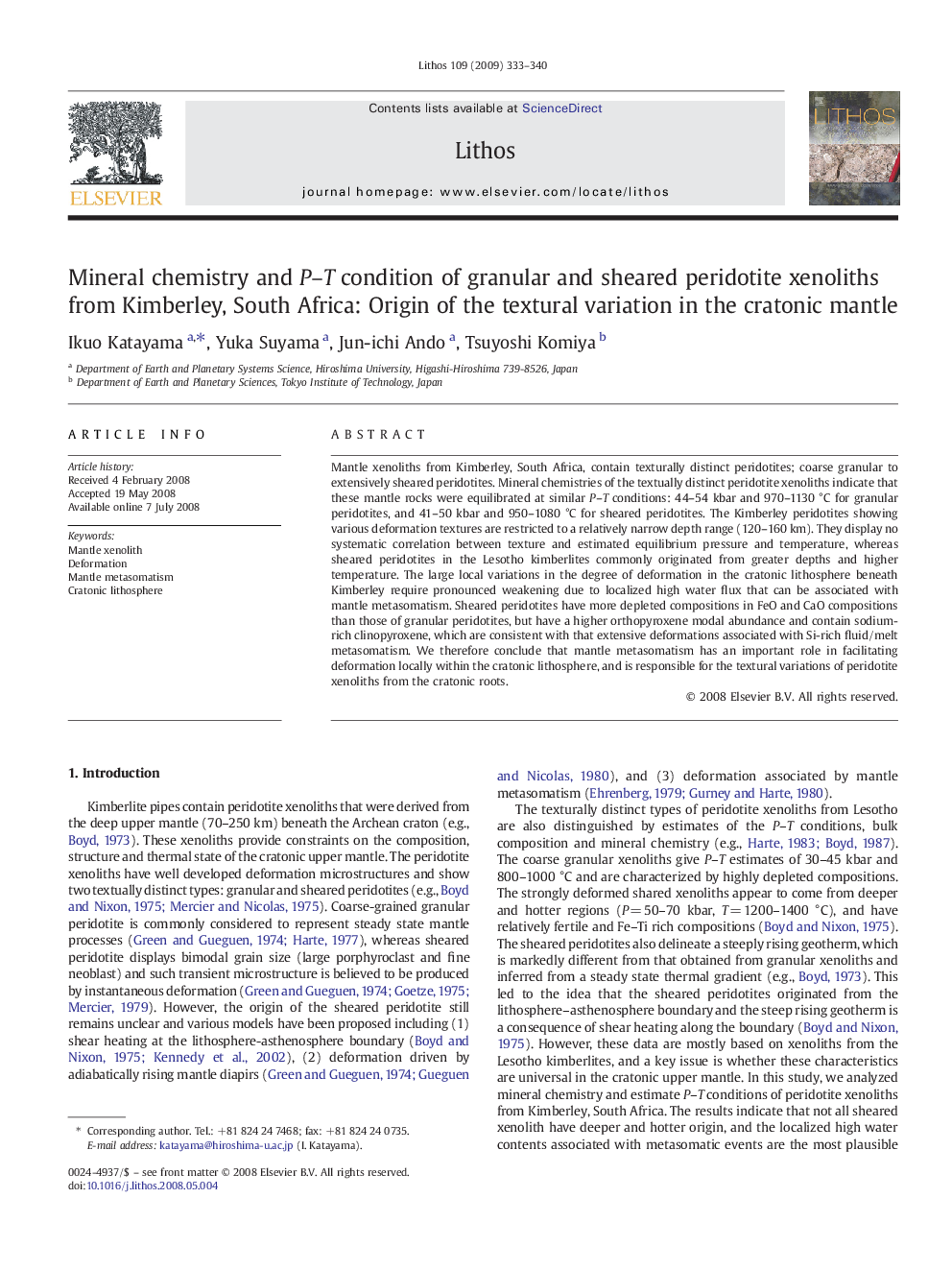| Article ID | Journal | Published Year | Pages | File Type |
|---|---|---|---|---|
| 4717417 | Lithos | 2009 | 8 Pages |
Mantle xenoliths from Kimberley, South Africa, contain texturally distinct peridotites; coarse granular to extensively sheared peridotites. Mineral chemistries of the textually distinct peridotite xenoliths indicate that these mantle rocks were equilibrated at similar P–T conditions: 44–54 kbar and 970–1130 °C for granular peridotites, and 41–50 kbar and 950–1080 °C for sheared peridotites. The Kimberley peridotites showing various deformation textures are restricted to a relatively narrow depth range (120–160 km). They display no systematic correlation between texture and estimated equilibrium pressure and temperature, whereas sheared peridotites in the Lesotho kimberlites commonly originated from greater depths and higher temperature. The large local variations in the degree of deformation in the cratonic lithosphere beneath Kimberley require pronounced weakening due to localized high water flux that can be associated with mantle metasomatism. Sheared peridotites have more depleted compositions in FeO and CaO compositions than those of granular peridotites, but have a higher orthopyroxene modal abundance and contain sodium-rich clinopyroxene, which are consistent with that extensive deformations associated with Si-rich fluid/melt metasomatism. We therefore conclude that mantle metasomatism has an important role in facilitating deformation locally within the cratonic lithosphere, and is responsible for the textural variations of peridotite xenoliths from the cratonic roots.
